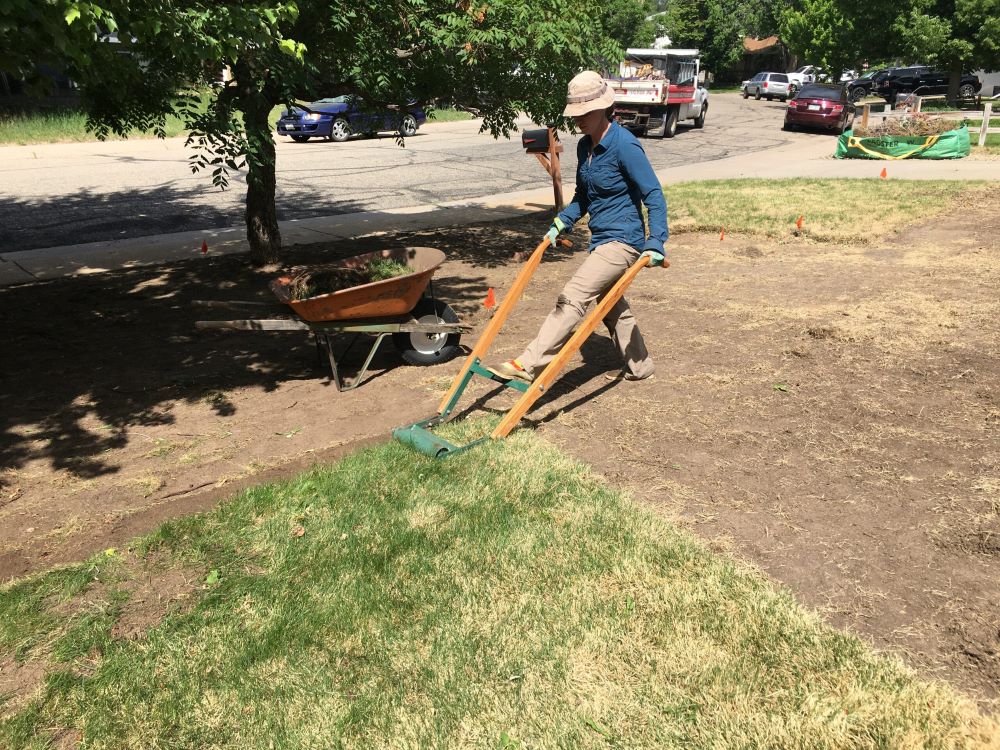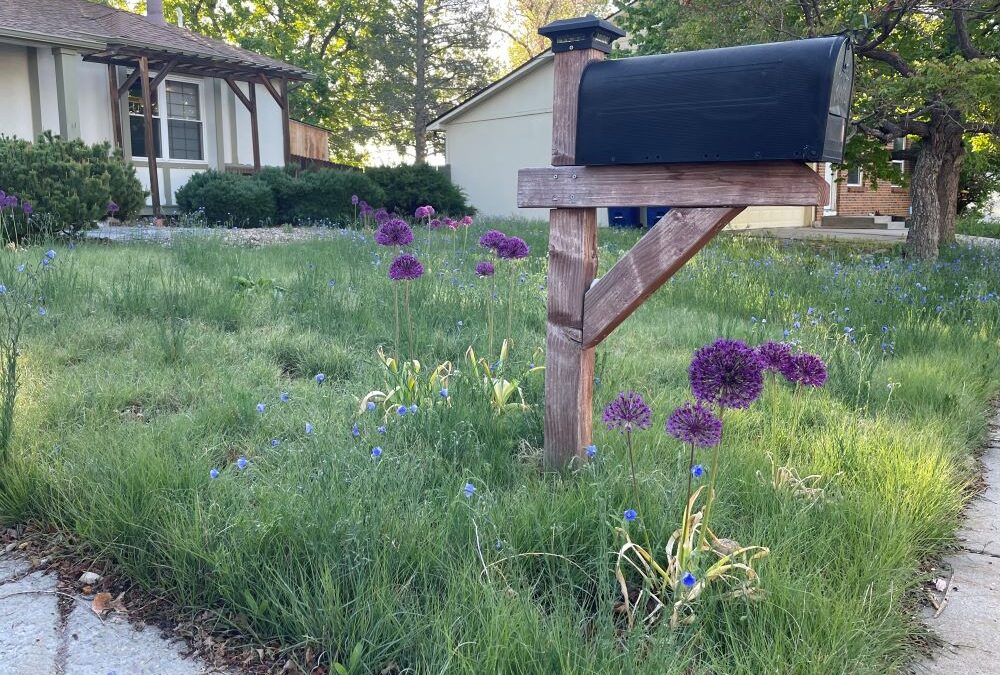Front Lawn Replacement
Custom Seed Mix
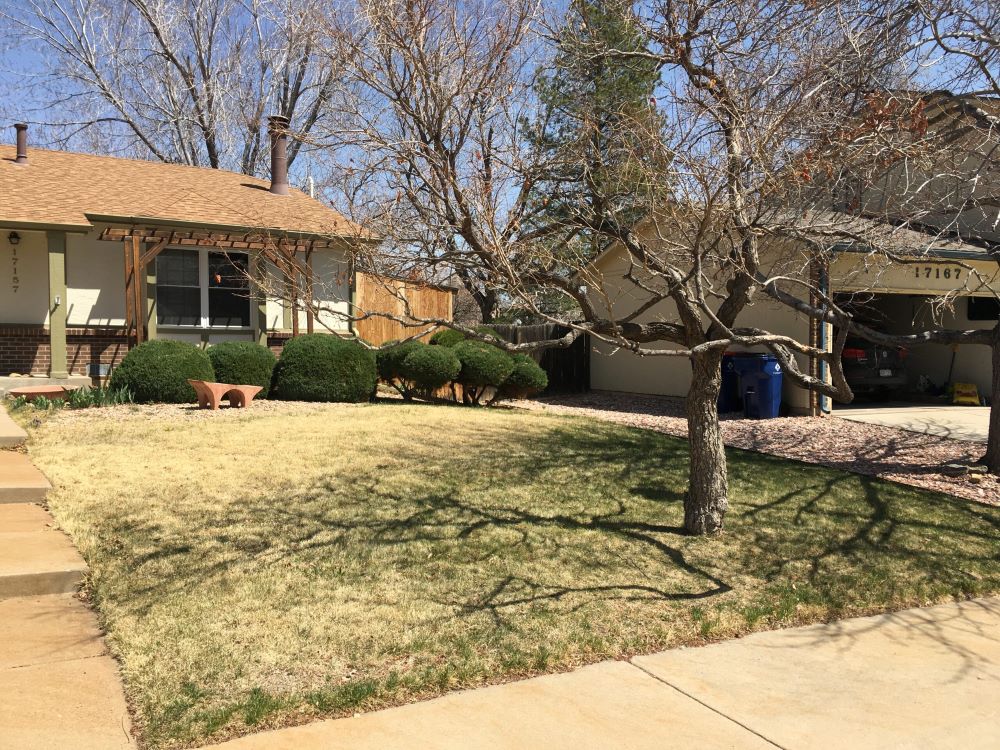
Before
This site was approximately 900 square feet of Kentucky bluegrass and Bermudagrass under partial shade from an existing tree.
During the First Year
The homeowner opted for a prairie warm season custom mix (buffalo grass (20%), blue grama (8%), side-oats grama (8%), plus wild blue flax (7%), scarlet globemallow (6%), and prairie clover (6%)) and forbes for their native conversion. Their intent was to reduce water usage and create a natural habitat in front of their home. This photo shows what the project looked like at the end of its first growing season.
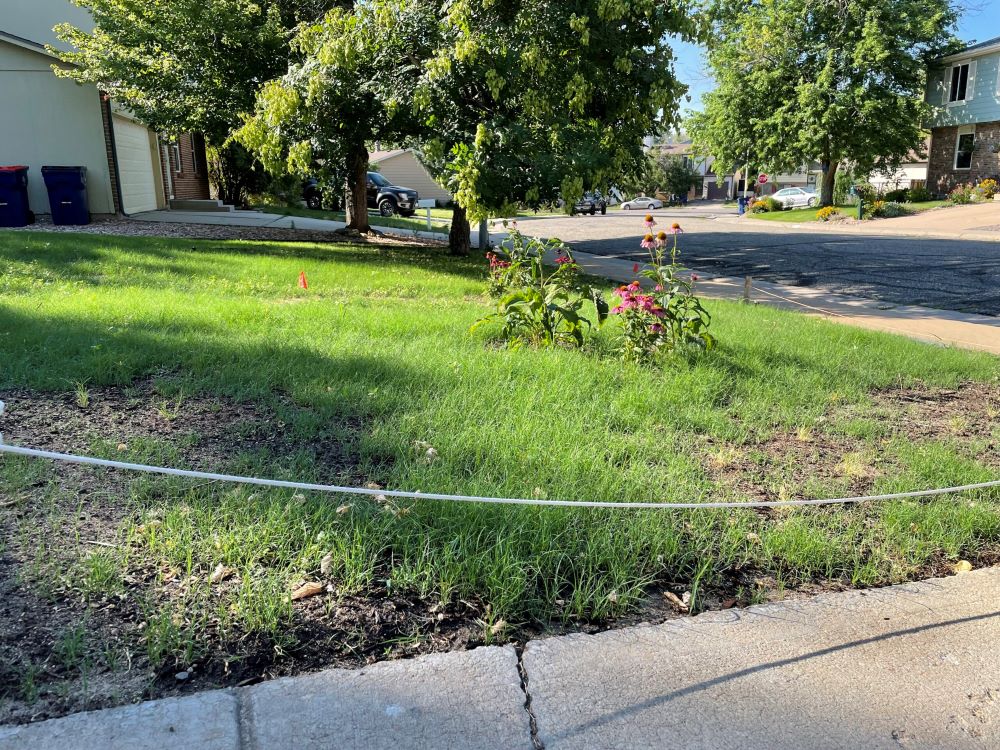
Blue flax and allium blooming in the native grass
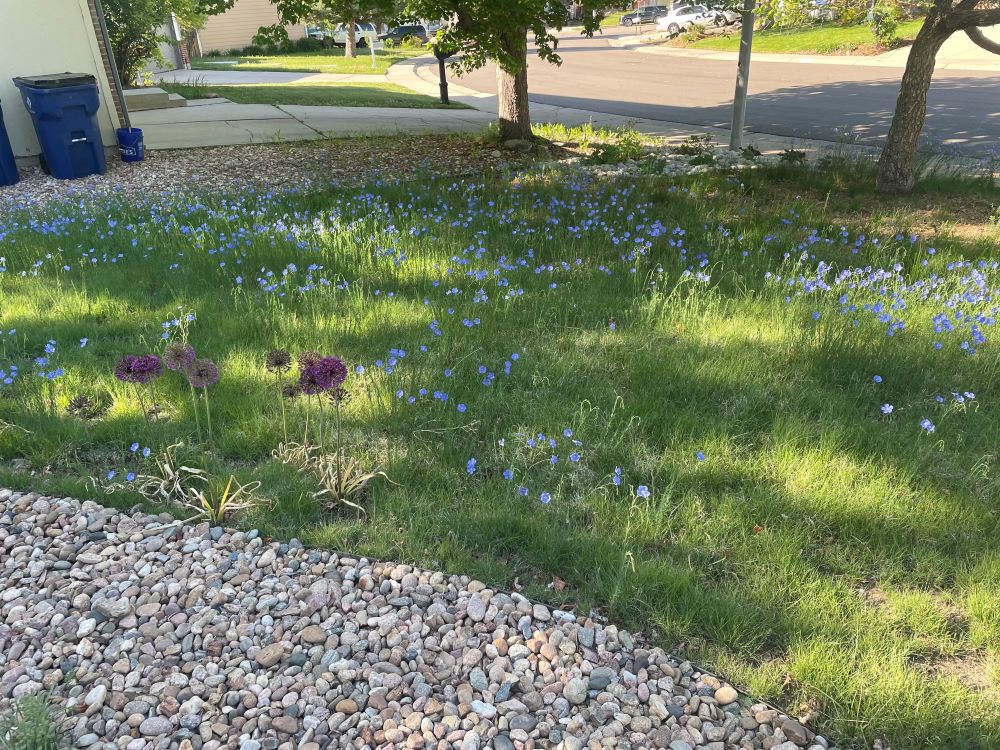
Blue flax and allium blooming in the native grass
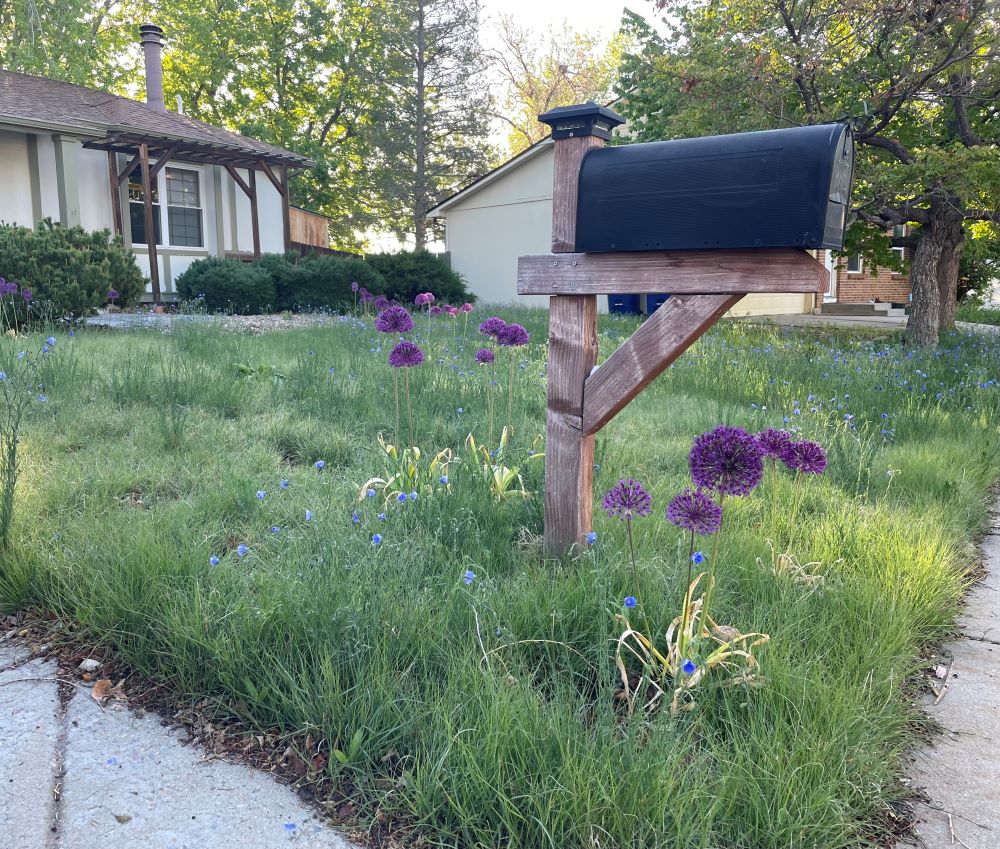
Project Scope
The objectives of this project were to replace the existing turfgrass with a meadow-like landscape, reduce water usage, create a habitat for wildlife, beautify the home and neighborhood, and inspire neighbors to transition to water-wise landscaping.
Renovation Method
Site Preparation
- Manual removal of lawn with sod cutter
- Graded slope for uniformity
- Biocomp compost application (4 cubic yards per Aurora city code)
- Manual tilling with rototiller in open areas
- Hand tilled with spade near dripline of existing trees
Sprinkler system upgrade
- Changed out 4-inch PRS heads with brass nozzles for 12-inch PRS heads with RVAN rotary nozzles
Seed Application
- Hand-sowed 4 pounds of seed mixture, keeping some in reserve for re-seeding bare spots
Maintenance
- Started by watering 3 times per day for 10 minutes; then reduced to 3 times per week at a rate of 3 times each day for 15 minutes
- Planted tulip bulbs and foxtail lily rhizomes after grass establishment
- Started by watering 3 times per day for 10 minutes; then reduced to 3 times per week at a rate of 3 times each day for 15 minutes
- No mowing or aeration
- Infrequent fertilization, if at all
Benefits
Residents expect more entertainment and enjoyment from their yard as they watch the plants thrive and attract more insect and bird visitors.
Lessons Learned
- A manual sod cutter is very time- and labor-intensive; would not recommend use for areas greater than 500 square feet. Gas-powered sod cutters may be a better option.
- Start this process in April instead of May to avoid sowing seed in the heat of July.
- Project managers had a trouble removing sod in the corner of the yard that had the largest tree roots. This same corner was not suitable for native grasses, so they adapted to plant a xeriscape bed in the area.
- It may have been worth building a new irrigation system rather than modifying the existing system. Trenching and moving the existing heads with many tree roots was labor intensive, frustrating, and damaging to the trees.
Removal of existing grass with sod cutter
